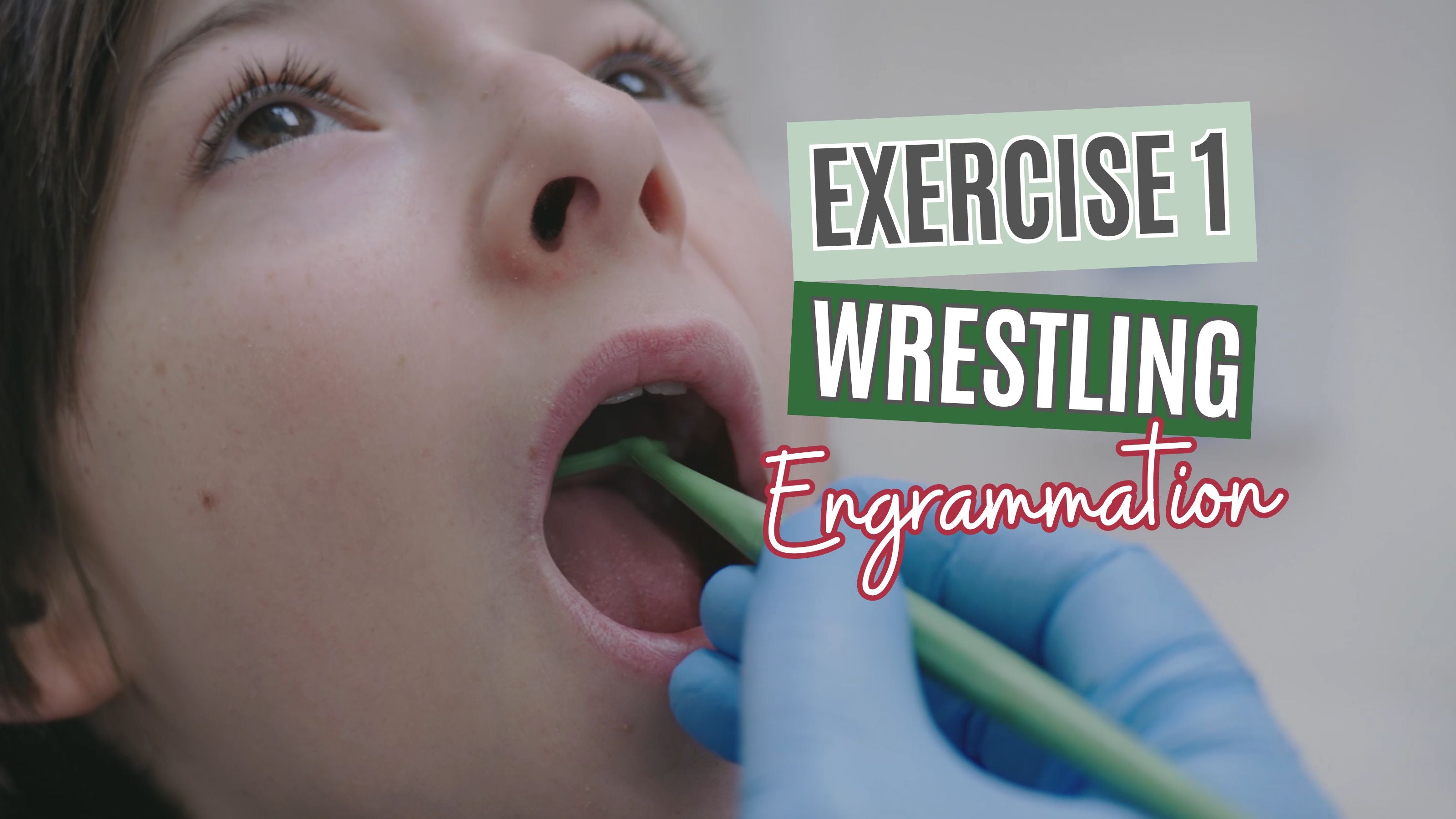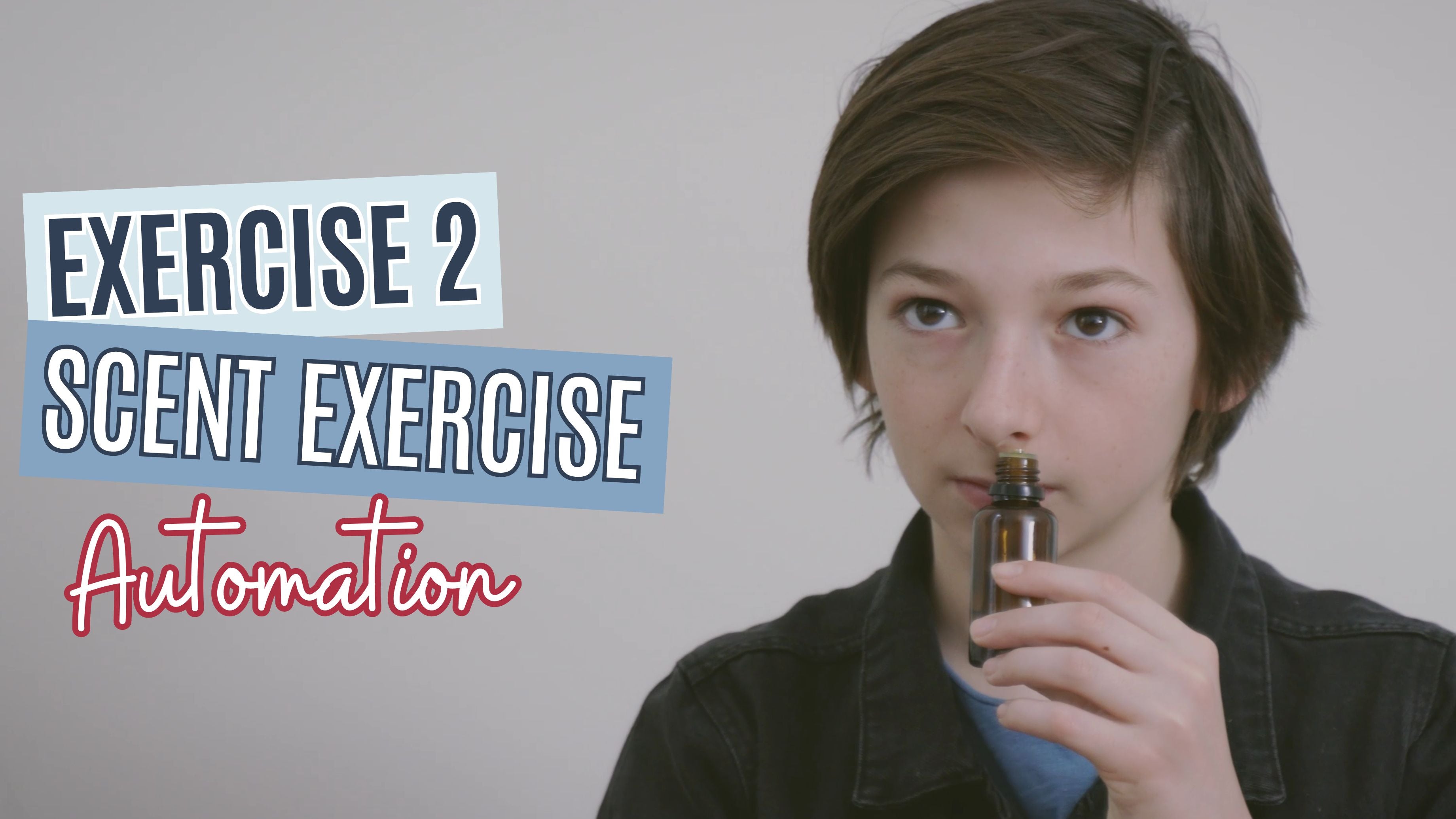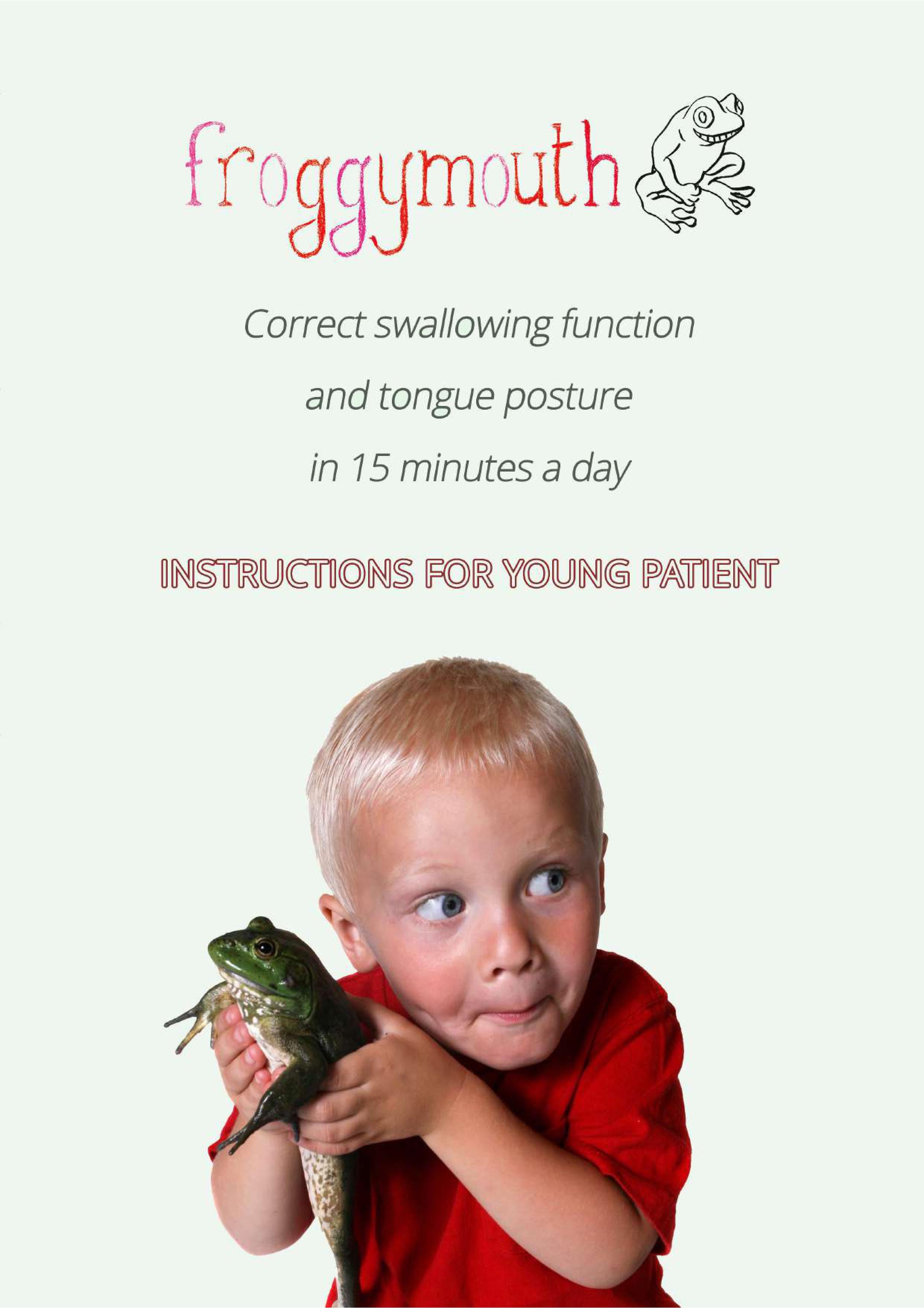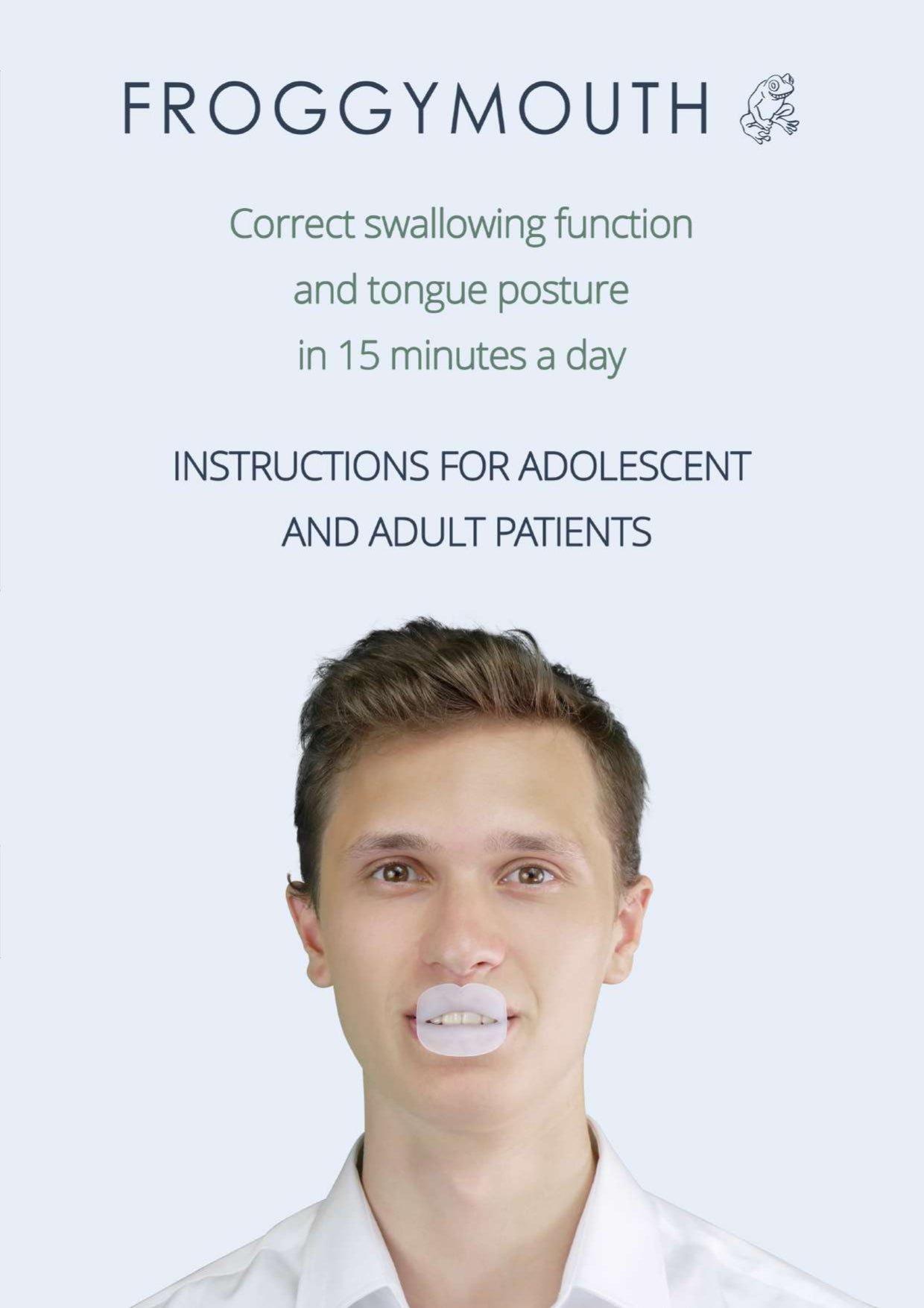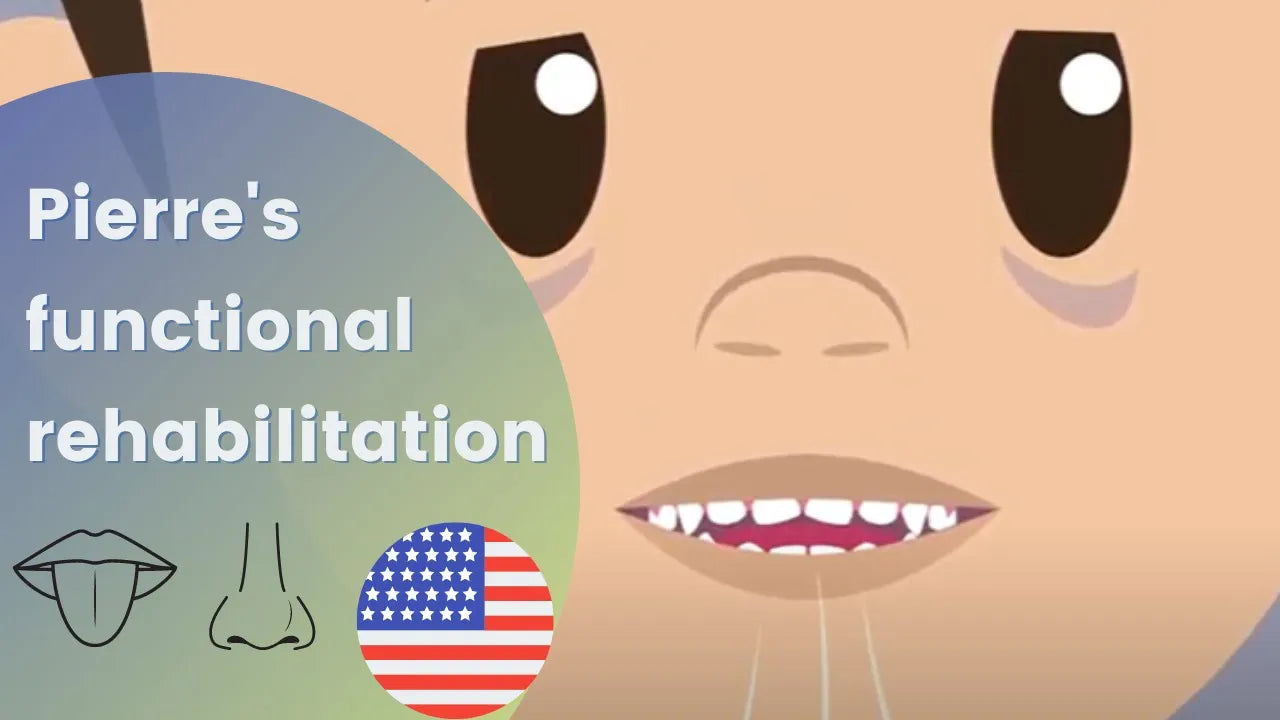The use of the Froggymouth device in three steps:
FOR AN OPTIMAL TREATMENT START, MAKE SURE OF THE FOLLOWING ELEMENTS:
THIS SESSION ALLOWS TO VALIDATE THE PHASE OF ENGRAMMATION OF THE TREATMENT. IT CAN TAKE PLACE BETWEEN 1 AND 3 WEEKS AFTER THE FITTING OF THE DEVICE (FIRST SESSION).

 PRESS
down on the patient's lingual V, from top to bottom, in order to apply pressure on the posterior part of the tongue.
PRESS
down on the patient's lingual V, from top to bottom, in order to apply pressure on the posterior part of the tongue.
 PUT
your patient to counter the force exerted by the mirror, with their styloglossus, by elevating their lingual dome.
PUT
your patient to counter the force exerted by the mirror, with their styloglossus, by elevating their lingual dome.
TREATMENT IS CONCLUDED WHEN THE POSITION OF THE TONGUE, DURING SWALLOWING AND AT REST, IS CORRECTED.
 DO YOU SEE THEM TRYING TO PASS THROUGH THE DENTAL ARCHES?
DO YOU SEE THEM TRYING TO PASS THROUGH THE DENTAL ARCHES?
 OR DOES IT REMAIN IN PLACE TO FULFILL THE SWALLOWING FUNCTION?
OR DOES IT REMAIN IN PLACE TO FULFILL THE SWALLOWING FUNCTION?






